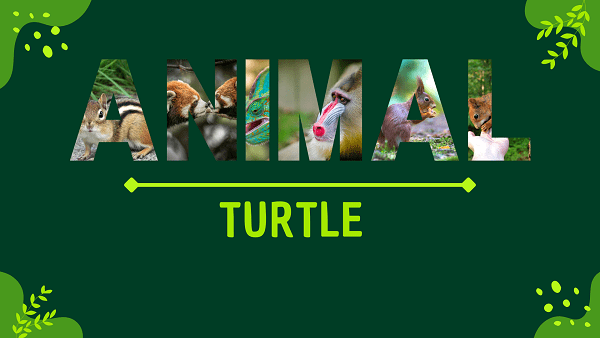Turtle | Facts, Diet, Habitat & Pictures
Home » Animals » Turtle | Facts, Diet, Habitat & Pictures
Turtle Overview
Appearance
Turtles are reptiles characterized by their distinctive appearance. They have a bony, protective shell that covers their body, consisting of an upper carapace and a lower plastron. Turtle limbs are adapted to their environment; aquatic turtles have webbed feet for swimming, while terrestrial species have sturdy, clawed limbs.
Turtles possess a beak-like mouth and often exhibit a wide range of colors and patterns on their shells and skin. Their appearance is marked by slow, deliberate movements, reflecting their unhurried nature.
Origins And Evolution
Turtles have a remarkable evolutionary history that spans over 200 million years. They belong to the order Testudines and are one of the oldest reptile groups still in existence today.
These reptiles evolved from primitive, terrestrial ancestors during the Triassic period. Over time, they developed their distinctive shell, a unique feature among reptiles. This shell served as both protection and a tool for regulating body temperature.
Turtles diversified into various species, adapting to different environments, including oceans, rivers, swamps, and terrestrial habitats. Some species became highly specialized, like sea turtles with adaptations for a marine lifestyle.
Despite their ancient origins, turtles have persisted through geological changes, making them a testament to the resilience of life on Earth.
Behavior and Lifestyle
Turtles exhibit a range of behaviors and lifestyles influenced by their species and habitat. Many are cold-blooded and rely on their environment to regulate body temperature. Aquatic turtles are skilled swimmers, while terrestrial species are generally slow-moving and burrow for shelter.
Turtles are often solitary creatures, with some exceptions during mating and nesting seasons when they may gather in groups. They have longevity, with some species living for decades to over a century, and their ability to withdraw into their protective shells when threatened is a key aspect of their defensive behavior.
Turtle Scientific Classification
- Kingdom: Animalia
- Phylum: Chordata
- Class: Reptilia
- Order: Testudines
Turtle Locations
- Oceans
- Seas
- Rivers
- Lakes
- Ponds
- Swamps
- Wetlands
- Marshes
- Deserts
- Grasslands
- Forests
- Islands
- Urban areas
Fast Facts
- Name: Turtle
- Scientific Name: Testudines order
- Habitat: Aquatic, terrestrial
- Diet: Omnivorous diet
- Physical Features: Protective shell
- Nocturnal: Variable activity
- Solitary: Often solitary
- Unique Order: Testudines order
- Lifespan: 20-100+ years
- Conservation Status: Varies
- Fun Facts: Slow locomotion
Physical Characteristics
- Color: Variable hues
- Skin Type: Scaly shell
- Top Speed: Leisurely swimmer
- Lifespan: 20-100+ years
- Weight: Heavy reptile
- Length: Shell to tail
- Age of Sexual Maturity: Variable
- Age of Weaning: Parental care
Turtle FAQs
How long do turtles live?
The lifespan of turtles varies by species, but many can live for several decades to well over a century.
Are turtles amphibians or reptiles?
Turtles are reptiles, not amphibians. They have bony shells and scaly skin, which distinguishes them from amphibians.
Can turtles leave their shells?
No, turtles cannot leave their shells. The shell is a part of their skeletal system and is fused to their spine and ribcage. It provides protection and support.
Do turtles feel pain when their shells are touched?
Turtles do not have nerve endings in their shells, so they do not feel pain when their shells are touched or scratched.
How do turtles breathe when they are inside their shells?
Turtles have a flexible neck that allows them to retract their head and limbs into their shell. They can still breathe and continue to pump air in and out of their lungs while inside their shells.
What do turtles eat?
Turtles have diverse diets depending on their species. They can be herbivorous, omnivorous, or carnivorous, and their diet includes plants, algae, insects, small mammals, fish, and aquatic creatures.


